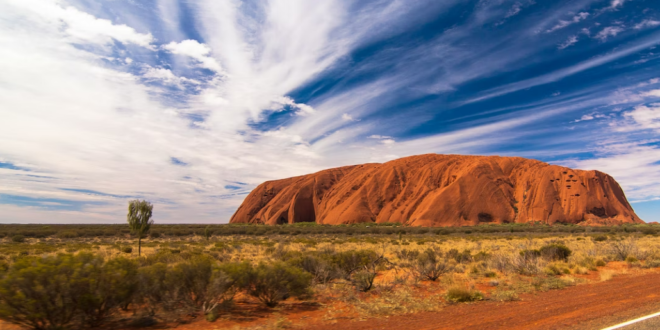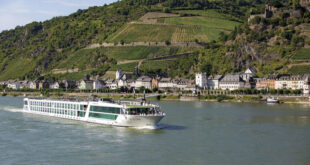Flash back 100 years and the world was very different to today. Across the globe, countries, cities and sights have been embracing their indigenous identity. As they shed the shackles of colonialism or seek to reconnect with their heritage, many are reclaiming and renaming.
From Turkey changing to Türkiye, to national parks like Brecon Beacons in Wales being renamed, destinations are casting aside old monikers for ones that resonate with their heritage and heart. The Netherlands replaced Holland, Eswatini is Swaziland, and Czechia is the old Czech Republic. These socio-political decisions to change a region’s identity is the next chapter for the locals as they reclaim and rename.
Let’s look at 8 countries, cities, and sights that have changed their names to better reflect the indigenous identity of the place.
Türkiye (Turkey)

When Turkey embraced its indigenous roots by adopting the name Türkiye, a global conversation ensued. Some critics saw it as a mere linguistic shift and country rebrand. But for the local people, it was a profound reconnection with their rich history.
“Türkiye is the best representation and expression of the Turkish people’s culture, civilization, and values,” Recep Tayyip Erdogan, the President of Türkiye, said in late 2021.
The global backlash often centred on the adjustment required in international contexts. The president requested the name change across languages, including English.
But the significance of this change lies in reclaiming cultural authenticity. Türkiye, echoing the nation’s diverse heritage, encapsulates a sense of pride and self-determination. For locals, it transcends linguistics; it’s a declaration of identity, a homage to centuries of tradition, and a step towards shaping a narrative that reflects the true spirit of the land.
The Netherlands (Holland)

The country’s official name has always been the Kingdom of the Netherlands. And yes, they still have a royal family. Over time there’s been a slow transition from colloquially using “Holland” to the more accurate “The Netherlands”. This change more accurately represents the entire nation and its diverse regions.
While “Holland” historically referred to specific provinces, the change acknowledges the country’s broader cultural, geographical, and historical diversity. Encouraging the use of “The Netherlands” aligns with a desire to move beyond regional associations and showcase the richness found in every corner of this European nation.
Eswatini (Swaziland)

Eswatini’s transition from Swaziland in 2018 marked a significant assertion of cultural identity and independence. Renaming the kingdom to Eswatini, meaning “land of the Swazis,” emphasized a deep connection to its indigenous identity and heritage.
This change, announced during the celebration of the 50th anniversary of independence, aimed to shed colonial-era nomenclature.
Eswatini reflects the country’s commitment to preserving Swazi traditions, fostering a sense of pride among its people.
Mumbai (Bombay), India

Home to more than 20,000 million people, India’s largest city has been on a renaming journey. In 1995 the densely populated financial hub was officially renamed from Bombay to Mumbai, a change that sought to shed colonial legacies and embrace local linguistics.
The evolution from Bombay to Mumbai encapsulates a vibrant city’s journey through time and identity. “Mumbai” actually reflects the Marathi pronunciation of the name. The rechristening is not just a linguistic adjustment but a declaration of pride.
Bannau Brycheiniog (Brecon Beacons) National Park, Wales

In April this year, one of the United Kingdom’s beloved national parks reclaimed its Welsh name. Brecon Beacons National Park is now called Bannau Brycheiniog (pronounced Ban-eye Bruck-ein-iog) – or ‘the Bannau’.
Beyond a move to reclaim the area’s indigenous identity, the name change is part of the park’s plan to address the climate emergency. Projects are underway to halt and reverse the impact of climate change on the park. This includes the planting of one million trees, improving water quality, building wildlife corridors, and the restoration of 16,000 hectares of peatland.
“Reclaiming our old name reflects our commitment to the Welsh language, but we understand people are used to calling the Park by the name everyone’s used for 66 years so we don’t expect everyone to use Bannau Brycheiniog, at least straight away,” Chief Executive Catherine Mealing-Jones said.
Aotearoa / New Zealand

The incorporation of the Māori name Aotearoa alongside New Zealand signifies a commitment by the small island nation to honour its dual cultural heritage.
Aotearoa loosely translates as “Land of the Long White Cloud.” This name was said to be bestowed by the Polynesian navigator Kupe. It’s been used by the Maori people for decades, if not centuries, and is a strong part of New Zealand’s identity.
The dual naming reflects a broader cultural shift towards embracing diversity. New Zealand has always been open to ensuring the nation’s indigenous identity is given equal footing.
Czechia (Czech Republic)

Back in 2016 the the Czech government officially changed its name to Czechia – though the adoption of this name has been slow. This year the government put down their foot. It announced that Czechia will be used in all official government documents, legal correspondence and embassy business.
One reason is that the official name for France is the French Republic, so the Czech Republic can be Czechia – it’s easier and shorter to use. So when the next Olympics occurs you can expect to see sportspeople from Czechia, not the Czech Republic.
Curiously, Czechia has gone through a name change before. Historically the region was known in English as Bohemia, and only around the 1990s it gained the name Czechia while still part of Czechoslovakia. After a peaceful split from Slovakia in 1992, the Czech Republic emerged.
Uluru (Ayer’s Rock), Australia

The mega monolith at the centre of Australia has two names. The name Uluru is a proper noun from the Pitjantjatjara language. The indigenous Anangu people have been using this name long before Europeans arrived.
Explorer William Gosse was the first non-Aboriginal person to see Uluru in 1873, and he named it Ayers Rock after Sir Henry Ayers, the Chief Secretary of South Australia at the time. This name was widely used until 1993 when it was given a dual name – Ayers Rock / Uluru. In 2002 the dual name was reversed to put the indigenous identity first.
While its official name is now Uluru / Ayers Rock, most Australians call it just Uluru.
This century Australia has embraced more of its indigenous identity. It has returned many sites and landmarks to their original names and recognized the traditional owners of said lands. Next time you visit you might see cities with dual names, such as Sydney/Warrane, Melbourne/Narrm, or Brisbane/Meeanjin.









Join the Discussion
Type out your comment here:
You must be logged in to post a comment.